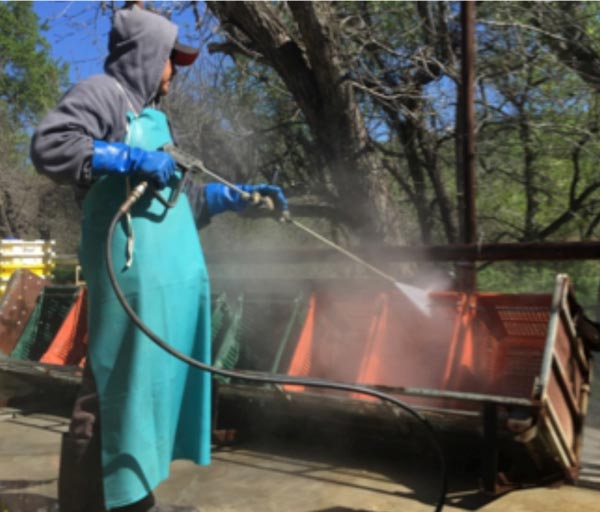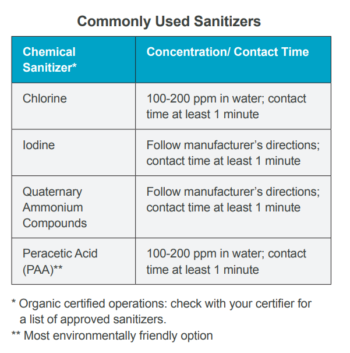Prioritize safety in your supply chain with these sanitization tips.
Many businesses are working around the clock to adjust during the COVID-19 pandemic, and like us, we know the safety and protection of your employees and customers is a top priority. One way to help keep everyone safe is to use proper cleaning techniques for your material handling solutions. In this post, we’ll cover helpful guidelines on how to sanitize plastic pallets and crates.
Recommended cleaning and sanitization process
Industry experts suggest a five-step cleaning process to clean and sanitize reusable plastic containers.
- Pre-wash—remove visible dirt and debris
- Wash—wash with soap and water
- Rinse—rinse all remaining soap and residue
- Sanitize—treat and disinfect
- Dry—air-dry completely before reusing
Experts also recommend wearing protective gear, such as gloves and goggles, during the cleaning process to protect your skin against soaps and sanitizing chemicals. Keep reading to discover hints for cleaning and sanitizing plastic material handling solutions using this five-step process.
Cleaning hints
Cleaning a plastic pallet or crate is much easier than trying to sanitize a pallet made of wood or other porous materials. The first step is to remove any dirt or debris that has collected on the plastic. This step might include wiping it down with a rag and all-purpose general cleaner, power washing with detergent, or running the pallet through an automated pallet washer with detergent and hot water.
After washing, rinse the plastic pallet or crate and make sure no cleaning product or debris remains, then allow the plastic to dry fully.
Sanitizing hints
A clean surface is not necessarily sanitary. You will need to sanitize or disinfect plastic material handling solutions to kill any harmful bacteria or viruses that still linger, such as COVID-19. Sanitization includes treating the plastic with chemicals to clean and disinfect all surface areas.
Some businesses opt to outsource sterilization to a commercial sanitation service. If you choose to sanitize your plastic material handling solutions in-house, you have a few options:
- Submerge the plastic in a tub full of sanitizer solution
- Apply the sanitizer solution with a spray bottle
- Wipe plastic with a clean towel soaked in sanitizer solution
After the sanitizing step, allow the pallets and crates to dry completely.

If you’re not already familiar with how to sanitize plastic pallets and crates, you might be wondering how to protect your newly sanitized material handling solutions from contamination once they’re sanitized. Handling them with clean gloves and storing them in a sanitized area can help keep them contaminant-free.
Which sanitizers should you use?
The most commonly used chemical sanitizers include chlorine, iodine, quaternary ammonium compounds, and peracetic acid (PAA). Vinegar is not considered an acceptable sanitizer for disinfecting surfaces. Reference the table on the right for recommended concentrations and contact times from Use Reusables, a collaboration of the Reusable Packaging Association (RPA) and StopWaste.
Check labels before use for the appropriate dilution and concentration to ensure it’s the correct strength and how long the sanitizer needs to be on the surface. Test strips for chlorine bleach are available at restaurant supply stores and online.
If you are storing and transporting food, choose a food-approved general-purpose cleaner, such as an all-purpose cleaner or detergent that does not contain bleach, which could contaminate the fresh food products.
How often should you sanitize?
Because many people come into contact with plastic pallets and crates, it’s important to sanitize correctly and frequently. The RPA has outlined science-based protocols for properly cleaning plastic material handling solutions between uses in its Guidelines and Best Practices for the Safe Use of Returnable Containers in Food Supply Chains. These practices include washing, rinsing, sanitizing, and air-drying all food contact containers between every use.
Plastic pallets and crates provide several hygienic benefits for grocers and many other industries. Because they’re easy to clean and sanitize, plastic pallets and crates are the ideal material handling solutions for your supply chain. Learn more about the variety of products we offer or call our team at 800.356.8150.
